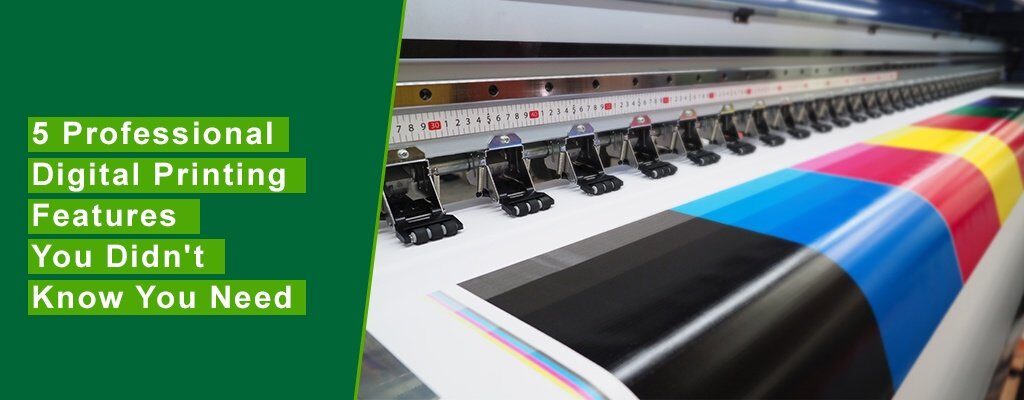Comprehending Exactly How Digital Printing Reinvents the Printing Sector
The printing industry, long steeped in conventional techniques, is going through an extreme transformation with the introduction of electronic printing. This cutting-edge technology, which avoids the demand for printing plates, enables fast production and modification, improving the landscape of print communication. With its prospective to spur interaction via personalized content and to supply sustainable services, it's clear that digital printing is greater than a technical innovation; it's a pivotal game changer. But just how exactly does it revolutionize the industry? Let's check out.
The Evolution of Digital Printing: A Quick Review
Considering that its creation, digital printing has actually undertaken considerable changes, constantly revolutionizing the printing sector. Its advancement started with the development of xerography in the mid-20th century, a process which prepared for laser printers. With the arrival of the 90s, digital printing modern technology started to develop, and the industry observed the intro of direct imaging presses, which eliminated the demand for printing plates. As the brand-new millennium unfolded, developments in technology additionally stimulated the growth of electronic printing, causing the creation of high-speed inkjet printers. These tools provided premium high quality and speed, permanently altering the landscape of the industry. Today, digital printing stands as a testimony to human advancement, continually progressing to meet the ever-changing requirements of the modern globe.

Unloading the Technology Behind Digital Printing
Looking into the ins and outs of electronic printing technology, one encounters an abundant tapestry of advanced equipment and complex formulas. At the heart of this process lies an electronic picture, which is refined by software application that divides it right into a grid of dots. These dots are then exchanged a digital code. This code is analyzed by the printer, which uses it to specifically deposit beads of ink onto the substratum. The droplets are so here tiny and accurate that they develop a picture that is basically identical from the initial. This elaborate system, strengthened by advanced software application and high-resolution imaging, has actually transformed the landscape of the printing market, leading the way for extraordinary levels of detail and precision.

The Advantages of Digital Printing for Businesses
Understanding the technology behind electronic printing gives a clear image of its accuracy and detail. Digital printing is eco pleasant, making use of less ink and creating less waste. The complete capacity of digital printing is realized when made use of for modification see this and personalization, a topic that will be covered in depth in the following area.
The Role of Digital Printing in Customization and Personalization
While typical printing techniques deal with modification and personalization, electronic printing stands out in these areas. It allows for the simple modification of layouts, without the requirement for expensive and taxing plate modifications (print on demand). This enables companies to customize items to individual consumers, meeting details requirements and enhancing consumer contentment
Digital printing also enables variable information printing, where elements such as message, graphics, and photos may be altered from one published piece to the next, without reducing down the printing process. This is especially beneficial for direct advertising and marketing projects, where customized messaging can substantially boost reaction rates. By doing this, digital printing not only changes the printing industry but likewise changes the means businesses interact with their customers.
Analysing the Environmental Effect of Digital Printing
Although electronic printing has actually been admired for its role in customization go to my site and personalization, it is crucial to examine its environmental effect. Digital printing can be much less inefficient than standard approaches, due to the fact that it operates on a 'print as needed' basis, getting rid of the demand for large print runs that can result in surplus and waste. Additionally, it uses fewer chemicals and produces less volatile natural compounds (VOCs) compared to balance out printing. The energy usage of digital printers can be high, leading to enhanced carbon footprint. The use of non-recyclable printing elements and the difficulty of e-waste monitoring pose substantial ecological worries. While electronic printing has several benefits, its environmental impact has to be conscientiously managed.
Final thought
In conclusion, electronic printing has changed the printing industry, providing fast, affordable, and top quality remedies. It helps with modification, enhancing consumer engagement, and utilizes a lasting print-on-demand design. As this technology proceeds to evolve, its effect on organization communication, client satisfaction, and ecological sustainability comes to be increasingly profound. Comprehending these adjustments is essential for organizations to leverage the benefits of electronic printing properly.
Comments on “The future of eCommerce is closely tied to innovations in print on demand.”